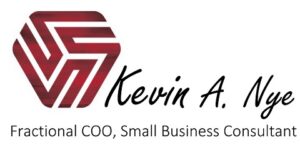For small business owners, setting goals often feels like throwing darts at a moving target. You know what you want: more customers, higher profits, better efficiency. But the real struggle is getting your team aligned, focused, and steadily moving toward those outcomes.
That is where OKRs come in. Objectives and Key Results, or OKRs, offer a simple but powerful framework to turn big ideas into concrete, achievable action plans. When used properly, OKRs create clarity, accountability, and momentum. They help you move from wishful thinking to measurable wins.
Why Traditional Goal-Setting Often Fails
Before diving into OKRs, it helps to understand why most traditional goal-setting methods fall short for small businesses:
- Vague goals like “grow revenue” or “increase social media followers” are hard to act on.
- Lack of focus causes teams to spread themselves too thin.
- No clear measurement means you do not know when you have succeeded.
- No buy-in from employees leads to goals being ignored or half-heartedly pursued.
- Setting goals and forgetting them leaves plans gathering dust after a few busy weeks.
Most importantly, traditional goals often fail to connect everyday work to the bigger picture. Teams get stuck in the weeds, and motivation drops because progress feels invisible.
OKRs fix this problem by connecting high-level goals with specific, measurable actions.
What Are OKRs?
OKRs stand for Objectives and Key Results.
- Objectives are the big, inspiring goals you want to achieve. They should be qualitative, motivational, and ambitious. Think of them as the destination on your business map.
- Key Results are the measurable milestones that show you are making progress toward the Objective. They are specific, quantitative, and time-bound.
A simple OKR might look like this:
Objective: Improve customer satisfaction to become the most trusted service in our area.
Key Results:
- Achieve a customer satisfaction score of 90% or higher by the end of the quarter.
- Reduce average customer support response time to under 2 hours.
- Increase positive online reviews by 30% within three months.
Notice how the Objective is inspiring and the Key Results are specific and measurable. Together, they give your team a clear focus and a way to track progress.
The Real-World Benefits of OKRs for Small Businesses
When implemented correctly, OKRs deliver several benefits that small business owners crave:
- Clarity: Everyone knows what matters most.
- Alignment: Teams move in the same direction without constant micromanagement.
- Focus: Effort is channeled into a few key priorities instead of being scattered.
- Motivation: Clear progress keeps morale high.
- Accountability: Performance is measured objectively, not subjectively.
Perhaps the biggest advantage is that OKRs force you to be intentional. Instead of reacting to every urgent issue that pops up, you and your team stay anchored to what truly drives the business forward.
Common Pain Points When Using OKRs (And How to Solve Them)
Implementing OKRs is simple in theory, but it can get tricky in practice. Here are some common struggles small businesses face and tips for overcoming them:
Pain Point 1: Setting Too Many OKRs
The Problem: It is tempting to set goals for every area of your business. Marketing, sales, operations, customer service — they all seem important.
The Solution: Limit yourself to 3-5 Objectives at any given time. Fewer goals mean more focus. It is better to fully achieve a few critical goals than to half-finish a dozen.
Pain Point 2: Creating Vague or Unmeasurable Goals
The Problem: Goals like “improve customer experience” or “be more efficient” sound good but are impossible to measure.
The Solution: Always tie Objectives to measurable Key Results. Ask yourself, “How will I know if we succeeded?” Numbers, percentages, and deadlines help turn fuzzy ambitions into sharp targets.
Pain Point 3: Not Involving the Team
The Problem: If leadership sets OKRs in a vacuum and hands them down, employees may feel disconnected or overwhelmed.
The Solution: Involve your team in creating OKRs. Let them suggest Key Results. This builds buy-in and often leads to better ideas because employees are closer to the day-to-day challenges.
Pain Point 4: Forgetting to Review Progress
The Problem: Many businesses set OKRs at the beginning of the year and then promptly forget about them.
The Solution: Make OKRs part of regular check-ins. Review progress weekly or bi-weekly. Celebrate wins and adjust as needed if things are off track.
Pain Point 5: Making OKRs Too Easy or Too Hard
The Problem: If OKRs are too easy, they are not motivating. If they are impossible, they are discouraging.
The Solution: OKRs should be ambitious but achievable. A good rule of thumb is to aim for about 70% success. Missing some Key Results shows you are stretching yourself.
How to Implement OKRs in Your Business
Now that you know the basics and pitfalls, here is a simple process to start using OKRs in your small business:
Step 1: Choose a Cadence
Decide how often you will set OKRs. Many small businesses start with quarterly OKRs. Three months is long enough to make meaningful progress but short enough to stay flexible.
Step 2: Set Company-Level OKRs
Start with 3-5 big-picture Objectives that align with your vision for the business. What are the most important things you must accomplish in the next quarter?
Write 2-5 Key Results for each Objective. These should be measurable and deadline-driven.
Step 3: Cascade to Teams and Individuals
Once company OKRs are set, work with department leads or employees to create supporting OKRs. These should tie directly into the broader goals.
Example:
- Company Objective: Increase sales revenue by 20% in Q3.
- Sales Team Objective: Book 15% more qualified leads each month.
- Marketing Team Objective: Generate 500 inbound leads by the end of the quarter.
Step 4: Track Progress Regularly
Use simple tools like spreadsheets, whiteboards, or OKR software to track progress. Have short regular meetings to check in on Key Results and identify roadblocks early.
Step 5: Review and Reflect
At the end of the quarter, review what worked and what did not. Celebrate wins, learn from misses, and use those lessons to set better OKRs next time.
Real-World Examples for Inspiration
Example 1: A Local Bakery
Objective: Become the go-to bakery for birthday cakes in town.
Key Results:
- Increase birthday cake orders by 50% in six months.
- Launch a new “custom cake” page on the website within 30 days.
- Collect 100 positive reviews mentioning birthday cakes by the end of the year.
Example 2: A Consulting Firm
Objective: Build a strong brand presence to attract bigger clients.
Key Results:
- Grow LinkedIn followers by 25% in the next quarter.
- Publish two guest articles in industry publications by June.
- Host one free webinar attracting at least 100 attendees.
Example 3: An Online Retailer
Objective: Boost repeat customer rate.
Key Results:
- Launch a loyalty program by the end of the month.
- Achieve a 20% open rate on post-purchase email campaigns.
- Increase repeat purchases by 15% in the next quarter.
These examples show how OKRs can fit businesses of any size or industry. The key is keeping them specific, measurable, and tied to real business outcomes.
Final Thoughts
OKRs are not a magic bullet, but they are a powerful tool for turning good intentions into great execution. For small business owners, the beauty of OKRs is in their simplicity. You do not need a fancy platform or a huge team. You just need the discipline to set clear goals, measure progress, and stay focused.
By using OKRs, you will not just set goals. You will create a culture of purpose, performance, and progress. And that can be the difference between a business that survives and one that truly thrives.


